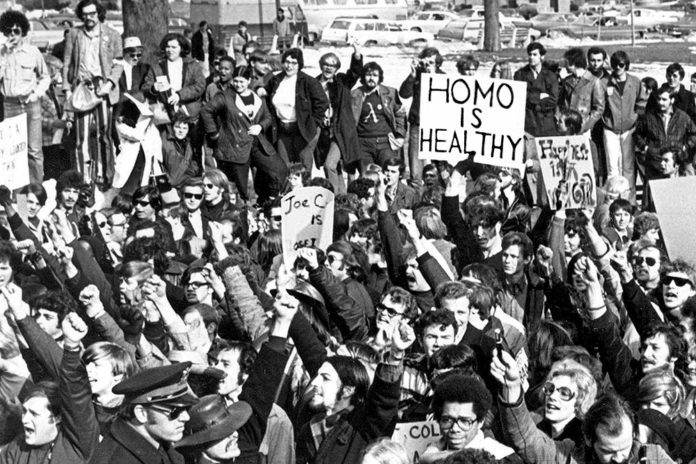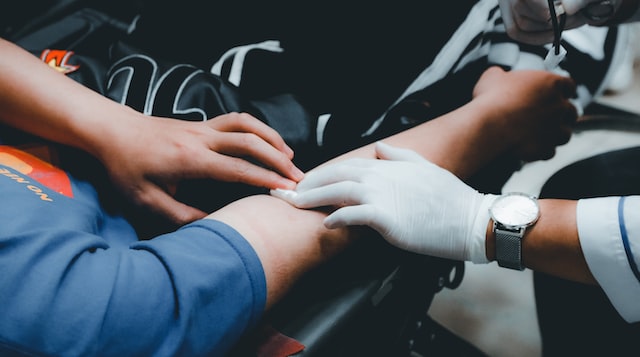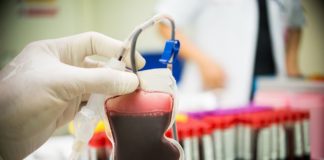
Bennett Singer and Patrick Sammon’s Cured (2021), explores a chapter in the recent history of the LGBTQ community – the campaign by activists to remove homosexuality from the American Psychiatric Association’s (APA) official manual, The Diagnostic and Statistical Manual of Mental Disorders (DSM), in the 1960s and 1970s.
A New York-based filmmaker, Singer co-directed with Nancy D. Kates Brother Outsider: The Life of Bayard Rustin (2003), about the man who, in August 1963, organised a mass protest for jobs and freedom that saw approximately 250,00 people march on Washington. In 2012 he co-directed with David Deschamps and Leslie D. Farrell, Electoral Dysfunction, that followed political humorist Mo Rocca on a road trip to explore the ups and downs of the American electoral system.
In conversation with PopMatters, following its screening at the BFI Flare London LGBTQ Film Festival in March 2021, Singer discusses filmmaking as a means to wake people up and as a form of activism that contributes to the pursuit of equality, justice, and human rights.
Why documentary as a means of creative expression? Was there an inspirational or defining moment for you?
I’ve come to think of social issue filmmaking as a form of activism, and making a film is different to being out in the streets, carrying picket signs, and invading meetings [of the American Psychiatric Association] as the activists of Cured did. Shining a spotlight on stories such as the one in Cured can mobilise people. It’s a story about the past, but it has a profound relevance to the present.
The first project I worked on was the public television series about the history of the civil rights movement in America, called Eyes on the Prize [Harry Hampton, 1987-1990]. It was a landmark series in American television history, and it helped me understand the power of film to wake people up to think about this country. It crystallised for me what America stands for, what its ideals are, and how big of a gap there has been, and continues to be, in those ideals. The tagline of that series has always stuck with me, “This is a series about the civil rights movement to make America be America”, which in so few words says it all.
The series was a model for the later projects I’ve worked on. There were historians and experts involved behind-the-scenes and in shaping the storytelling, but not on camera. The only people in Eyes on the Prize, and in Cured, are the people that lived through this history. There’s a particular power to their first-person testimony. They were there, they lived it, they can reflect on it in a powerful way. With Cured and civil rights history, there’s this sense of incredible courage and risk-taking that, again, might be beyond what I as an individual can aspire to. But by telling that story, I hope it can be part of a movement towards greater equality, justice, and human rights.
I like your use of the term “to wake people up”. When we question the capacity of a film to change the world and we cynically dismiss its value in this regard, we’re perhaps not considering it in the correct context. Cinema can change the perspective of an individual, which creates a gradual and less dramatic change by humanising or familiarising realities. It’s a trickle effect rather than the dramatic change we might imagine.
I’ve had the chance to take multiple films into classrooms and show them to high school students who might never have thought about gay rights. For one film I co-directed, called Brother Outsider, more meaningful or surprising than the film festivals it played at — the BFI Flare and Sundance, and it aired on PBS — was the impact I saw it have on 15- and 16-year-olds. They were thinking about these issues of activism and what it means for themselves to take a stand, be an ally, speak out on an issue, and find their own authentic selves.
This is the core of Brother Outsider, Cured, and a lot of the other projects I’ve worked on. There’s this sense of waking people up by showing a model, or in the case of Cured, a set of heroes who took huge risks, having reached a point in their lives where they were worth taking.
The notion of being public and protesting with a message in 1965 when sodomy laws were on the books in virtually every state, and gay sex was outlawed, was a radical act. Yes, they looked respectable and they were dressed conservatively, but I don’t know if there was anything conservative about that moment. It was radical and inspiring, and I wanted to shine a spotlight on that piece of history.
Before there was a gay rights movement, there were these nascent small groups, these tiny pockets of individuals who came together. They felt they were American citizens and they deserved human rights, or, “We know we deserve human rights, but how can we possibly ever achieve that?”
It can happen so quickly with the APA story of automatic classification of being mentally ill to 1973 when the APA board voted unanimously to take that diagnosis out of their manual of mental illnesses. It was an intense, effective, and relatively fast campaign.
Cured compels you to consider how key events and moments for change often hang in the balance. The difference between one outcome versus another is separated by the thinest of margins.
I’ve thought a lot about how this change came into effect, and as you said it, it might well have gone the other way. Why were the activists so effective? There’s the Diagnostic and Statistical Manual of Mental Disorders (DSM), the official manual of American psychiatrists who themselves were doctors, and part of the medical establishment. At the heart of their world were science and data. The core of the protest was the argument that the doctors needed to look at the data and that science should determine whether homosexuality was or was not classified as a mental illness.
I have to give the APA members credit for thinking about their mission and values and for being willing to listen to these activists, who were strategic and effective in challenging the APA members to think about their own organisation and mission. In other words, what is and what constitutes a mental illness, and what doesn’t? If the APA members had been rigid and dogmatic and said, “This is our determination, this is a mental illness,” then there’s no discussion. We might still have homosexuality as a pathology.
When there’s a demand for change, there’s an inflection point that does, or in some cases doesn’t happen. In the case of the APA, there was a willingness to listen and you see that in the film. In the early protests, the activists are invading these meetings, shouting and shutting them down. But then in a couple of years, the gay and lesbian activists were part of the conversation. The invasion had shifted to dialogue and through that dialogue and conversation, there was an actual exchange of ideas [laughs]. It’s a radical thought I know.
John Fryer was on the 1972 panel at the APA convention [wearing a mask and disguise to protect his anonymity]. Then Ron Gold, another fearless and amazing gay activist, was on the 1973 panel, and with no mask, no disguise, he talked candidly about his personal history. The heart of his speech was, “Stop it. You’re making me sick!” He also made the argument that gay people and psychiatrists didn’t need to be enemies, that they could find common ground, and he challenged the psychiatrists to live up to their set of values. I’m struck by how fearless, honest, and visionary his approach was, and at that moment, how effective he was.
Winston Churchill said “the end of the beginning” in a speech in November of 1942, following the battle of El Alamein. In as significant a moment as this was, the LGBTQ community is still on a journey toward full equality, and so this phrase feels poignant. I do worry that full equality will always be an evasive reality.
It might be a little pessimistic to say never, and along with “the end of the beginning”, we could remember that quote, “never say never.” It was the end of the beginning, but I see it as a crucial turning point that opened up many possibilities and brought about a revolution It’s definitely an ongoing one. It’s sobering to remember that of the 193 member states of the United Nations, 69 — more than a third — still outlaw same-sex behaviour.
I co-authored the book, LGBTQ Facts (Deschamps and Singer, 2017), a comprehensive almanac of statistics specifically about how things have changed, and how they haven’t. It was a fascinating project and was along the lines of what we’re talking about, of revolutionary change juxtaposed with incredible resistance to change, and sometimes within a given country. America and the UK are still not places where members of the LGBTQ community can have equal rights to their heterosexual counterparts. There are still gaps and disparities, and there’s still prejudice and bigotry.
When you think about where this community was before the APA stepped in and made the decision to declassify homosexuality, everything that has happened since would have been impossible were it not for this cloud that hung over us. It was that you’re not only sick but you need to choose to be cured. Take that path, because we’re not going to consider the idea of legal protections or social acceptance.
There was a barrier represented by the mental illness classification, and so it was as you said, “the end of the beginning.” We’re still in the process of moving towards full equality, and conversion therapy is a huge and pressing issue, here [in the US] and in the UK. I was heartened to learn that Boris Johnson had gone on record as calling it an abhorrent practice that should be banned. And yet, as I understand it, a thousand days have passed since he made that statement, and it hasn’t been legislated against.
It has been a very slow process, and I hope that people who see this film might think about the history and the harm that was caused by earlier attempts to cure and convert LGBTQ people, based on sexual orientation gender identity. These same attempts to cure LGBTQ people through conversion therapy are also harmful.
One example of the way things have changed in a revolutionary way is that the APA is on record for saying that conversion therapy is a harmful and discredited practice. One of the prominent speakers and advocates against this therapy is the current CEO of the APA, an openly gay psychiatrist who appears in the film. It’s emblematic of this change, that 50 years ago Saul Levin would have been illegible for membership in the APA, as an openly gay psychiatrist, and now he’s leading the organisation.
I can’t recall the filmmaker that said this, but their point was that it’s important that people see themselves represented on screen – all communities and minorities, etc. I’d be interested to hear your thoughts on this idea and the need for equal, open, and honest representation.
Also, it’s important to not forget the lessons of the past, and the events that have led to this point, because to forget is to regress.
I’m a part of this community, and I had very little or no idea about this piece of our relatively recent past. Understanding it empowers us to appreciate the pioneers and the heroic activists who took so many risks to bring about this change. It also allows us to think about the way that the very social fabric, including societies of other countries, has shifted as a result of this change. Where we are today in the ongoing quest for full equality, what has changed, what hasn’t, what needs to and how to bring about that change, are all connected to this story.
A focus on history is empowering, and in terms of representation, there’s huge power in depicting and representing stories like this. For that reason, I’m especially excited that the documentary has been optioned as a basis for a fictional scripted series on FX. It’s being created by Steven Canals, who was the co-creator of POSE [Canals, Ryan Murphy and Brad Fulchuk 2018-21]. His brilliant storytelling style and his work as an activist, using narrative film in particular as a form of activism to reach a broad international audience, is heartening.
Documentaries have their niche and reach a large number of people, but there’s traditionally the reality that a scripted series, especially when there are fabulous actors and celebrities, have a different buzz and potential impact. It’s exciting to think about the way that the story can be adapted into a scripted project. I’m excited about fleshing out some of these characters, for instance, John Fryer.
In the documentary we have the pictures, we have two sentences of audio from a radio interview, but he died 20 years ago and so we couldn’t interview him. To create a character of doctor Fryer, to think about and portray who he was, the struggles he went through and how he made the decision to make that speech [at the 1972 APA convention], and how he felt after standing up and becoming a heroic crusader as he was, can be empowering. It can augment what we’ve done in the documentary.







